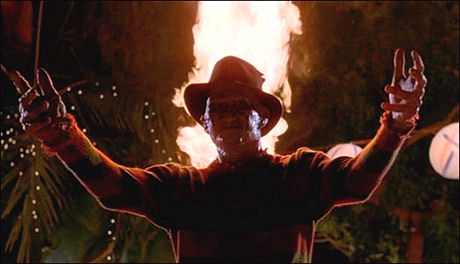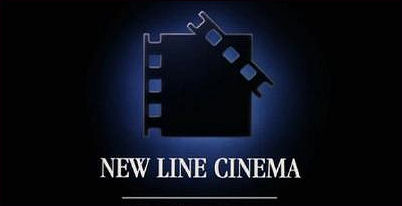In ’85 and ’86 I worked for New Line Cinema as a freelance publicist on both coasts. A little Nightmare on Elm Street 2: Freddy’s Revenge, a little Critters, a little in-house p.r. writing. I worked out of my home in Los Angeles, and worked at New Line’s offices on Eighth Avenue for a period after that. In one sense it was a warm and familial place to be (my co-workers included a very young Mike DeLuca and producer Janet Grillo), and in another sense it had a dark neurotic vibe.

I grew up under the domain of an alcoholic dad, and can tell you that I felt the same disturbed, frazzled, self-loathing aura. But at the same time I was relieved that New Line wasn’t a chilly corporate place. Everybody felt, fed into or responded to the New Line vibe. Everyone worked hard, and no one was without their flawed, emotional, anxious and passionate moments. It was a very human place to be. I kind of loved it.
I worked hard and well for New Line, but they eventually canned me because they thought I was too full of my own juice and didn’t pay enough attention to proscribed boundaries. My biggest accomplishment was selling the idea of Freddy Krueger (as played by Robert Englund) becoming a kind of midnight-show cult figure among horror fans. (I’ll never forget marching up Fifth Avenue with Englund in Manhattan’s Halloween Night parade.)
The Nightmare om Elm Street films became a profitable franchise for New Line, and I was the first guy to sell the idea of Freddy’s cult coolness to pulse-takers like N.Y. Times feature writer Aljean Harmetz and Entertainment Tonight segement producer Pete Hammond.
I’m mentioning all this because the independent New Line is toast now, and because I was part of the team before it came big and flush and everyone cashed in/out and went swanky. Thank God in heaven I wasn’t there during the Lord of the Rings era.

In a 3.1. N.Y. Times obituary, critic A.O. Scott writes that “it’s not for me to argue the merits of the decision to snuff out New Line’s independence. The dissolution of one corporate entity by another is rarely an occasion for sentiment, except perhaps among stockholders. But New Line Cinema was a link between the smooth, conglomerated present and a gamier, more entrepreneurial past. Mr. Shaye may live like Hollywood royalty, but his roots are in New York retail and in the nervy, disreputable world of grindhouses and exploitation pictures.
“[Shaye] was the man who made the 1930s drug-scare propaganda movie Reefer Madness into a staple of the late-’60s campus counterculture. He picked up, on the cheap, North American rights to Bruce Lee movies, and he helped turn John Waters‘s Pink Flamingos into a cult classic. And let’s not forget Freddy Krueger of the Nightmare on Elm Street series, or the Teenage Mutant Ninja Turtles.”
